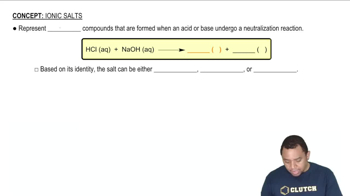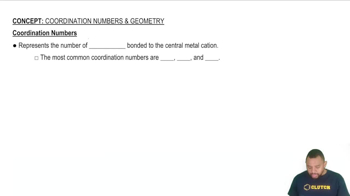Textbook Question
An oxide of rhenium crystallizes with the unit cell shown here (rhenium=gray; oxygen=red). What is the formula of the oxide?
 Verified step by step guidance
Verified step by step guidance


An oxide of rhenium crystallizes with the unit cell shown here (rhenium=gray; oxygen=red). What is the formula of the oxide?
Identify the structure of each of the two unit cells shown in Problem 48 as the rock salt structure, zinc blende structure, fluorite structure, antifluorite structure, or none of these.
Classify each of the following as a component of a silicate ceramic, an oxide ceramic, or a nonoxide ceramic. a. B4C
Classify each of the following as a component of a silicate ceramic, an oxide ceramic, or a nonoxide ceramic. b. Mg2SiO4